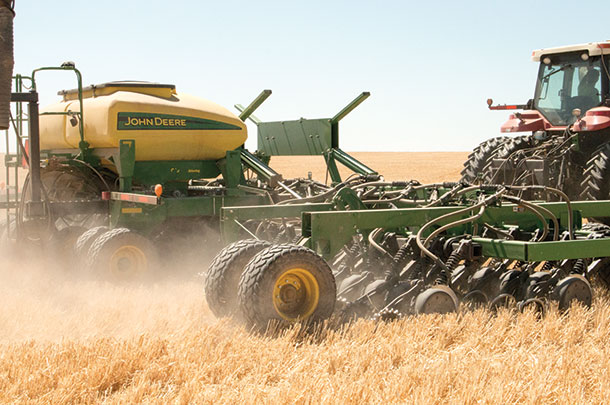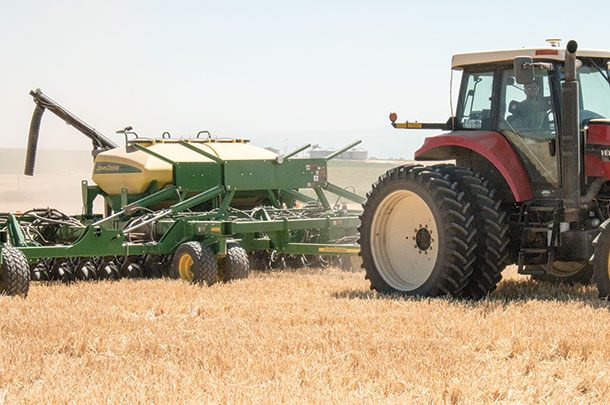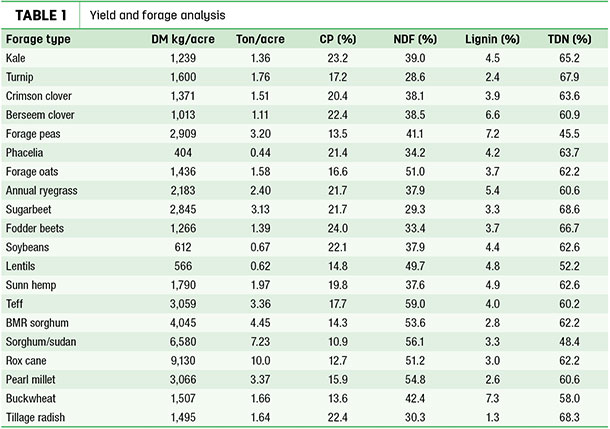Cover crops are often planted to benefit the soil, but they can also have forage value for your herd. Jim Paulson, University of Minnesota extension educator, says there are many functions of cover crops, including erosion control, water infiltration, soil health, building organic matter, nitrogen uptake, nitrogen production and mineral movement in the soil.
Many define cover crops as a “non-cash crop grown between two cash crops,” but there is nutritional value in many of them. Cover crops can fill slumps in grazing systems, extend the grazing season and provide emergency forage, which in turn can help dairy and beef operations be more profitable.
“Cover crops are not new, but we are certainly looking more at their benefits in recent years,” Paulson says. “Ten to 15 years ago, planting a cover crop such as winter rye following a corn silage harvest was used to reduce erosion on mostly bare ground. We now realize the benefits of rooting depth to break up soil’s hard pan and how roots bring microbial activity to the soil.”
He says a variety of cover crops can work for forage. “Which one you use may depend on when you want to plant it. Probably the most common scenario is to plant a cover crop following small-grain harvest or corn silage harvest. This would be planted sometime from the middle of August to the middle of September. A cool-season crop such as a small grain would be a likely choice.”

Factors in decision-making should include if the field will be grazed in the fall, stockpiled for winter feeding, allowed to grow and harvested for silage, baleage or hay in the springtime.
Paulson was recently involved with a Sustainable Agriculture Research and Education (SARE) project that looked at the nutritional value and forage potential of cover crops and mixtures. The project looked at cover crops as common as ryegrass and grazing corn but also less well-known crops as rox cane and pearl millet.
The top-yielding cover crop was rox orange cane at 10 tons of dry matter per acre. Rox cane is a sorghum variety developed at the Wisconsin Agricultural Experimental Station for syrup production. The total digestible nutrients (TDN) for rox cane is 63.18 percent, crude protein (CP) 12.69 percent and neutral detergent fiber (NDF) 51.25 percent.
The next highest-yielding crop was a sorghum-sudan mix (non-BMR) at 7.23 tons of dry matter per acre. The TDN for the mix was 56.1 percent, CP at 10.9 percent and NDF of 56.10.

Crops with the highest TDN values were radish and turnip tops at 68.3 percent and 67.8 percent, respectively. Radish tops had a yield of 1.64 tons of dry matter per acre, CP of 22.42 percent and an NDF of 1.28 percent. Turnips had a yield of 1.76 tons per acre, CP of 17.23 percent and NDF of 28.64 percent.
“Taller plants such as BMR sorghum-sudan and rox orange cane yielded greater amounts of dry matter, while lush tops of radish, turnips and kale excelled in forage quality but were lower in dry matter yield per acre,” Paulson says.
Fodder beets had the highest CP at 24 percent. The beets had a yield of 1.39 tons of dry matter per acre, a TDN of 66.69 percent and NDF of 3.72 percent.
Kale had the next highest CP at 23.21 percent, with a yield of 1.36 tons of dry matter per acre, TDN of 65.15 percent and 39 percent NDF.
Teff had the highest NDF at 59.02 percent, with a yield of 3.36 tons per acre, TDN at 60.23 percent and CP of 17.68 percent.
“From these data, we can better recommend combinations of species to fit certain cover crop and grazing scenarios,” Paulson says. “These are guidelines to get started that hopefully will lead to a greater forage supply for your farm.”
He adds, “Cover crops work best when included in a whole-farm cropping system. Cover crops can provide additional forage supply to a livestock farm when used as hay, silage, baleage or grazed in rotation while still providing the other benefits as well. But the questions that need to be considered are what and when: What cover crops provide the best forage? When will I plant? When and how to harvest? And will this be profitable for me?”
Paulson recommends working with your dairy team, such as your nutritionist, agronomist or extension agent, to make the decisions of what is best for your operation. He recommends using the base of $100 an acre to compare feed value and go from there.
SARE recently surveyed growers in the Midwest about cover crops. The survey showed there has been a large increase in both the number of farms adopting cover crop use and the number of acres planted in cover crops annually.

Twenty-three percent of conventional tillage farms are using cover crops and 48 percent of no-till farms. “The use of cover crops has grown tremendously in the last five years, partly because of prevent plant and because USDA/NRCS are starting to work out the problems in using them in relation to insurance and also seeing the benefits of using them,” he says.
Of the growers using cover crops, most felt they experienced an increase in the amount of organic matter in the soil, a reduction of erosion, soil compaction and weeds, increased yields of the next crop planted, and cover crops were useful in nitrogen management.
Concerns of the growers were cost and termination of the cover crop. Paulson says the survey found the median price to establish a cover crop was $12 per acre, and the median cost for seed came to $25 per acre.
Some growers felt concern that they would have lower yields from the following crop. “The longer farmers use cover crops, the more they see the benefit. The first couple of years, some don’t see a benefit, but after the third year, they start to get it to work in their system,” Paulson says.
Other concerns include the limited amount of information about cover crops, lack of financial incentive and the timing of planting since the crop needs to be planted early enough in the fall for it to establish good growth.
The survey found that winter cereals such as cereal rye and triticale are the most commonly used cover crops. Other popular species were legumes such as clover, brassicas such as turnips, and kale and annual grasses.
About 50 percent reported they used cover crops before or after planting corn or soybeans, and 33 percent reported using them after small grains. Many reported planting cover crops after harvesting winter wheat, after corn silage is harvested or after last cultivation. ![]()
PHOTO 1: This cover crop mix includes vetch varieties, BMR sorghum-sudan, collards, kale, buckwheat and a cool-season pollinator mix.
PHOTO 2: Steven Huettig of Hazelton, Idaho, drills cover crops into a field where he had just harvested wheat. Huettig will plant about 600 acres into cover crops this year.
PHOTO 3: For about four years, Star Falls Farms in Hazelton, Idaho has planted cover crops to improve soil fertility and provide fall grazing. Photos by Lynn Jaynes.
Kelli Boylen is a freelance writer from Waterville, Iowa





